Ok, so it’s about time I tell you what sample A is. Let me show you how it looks like first.
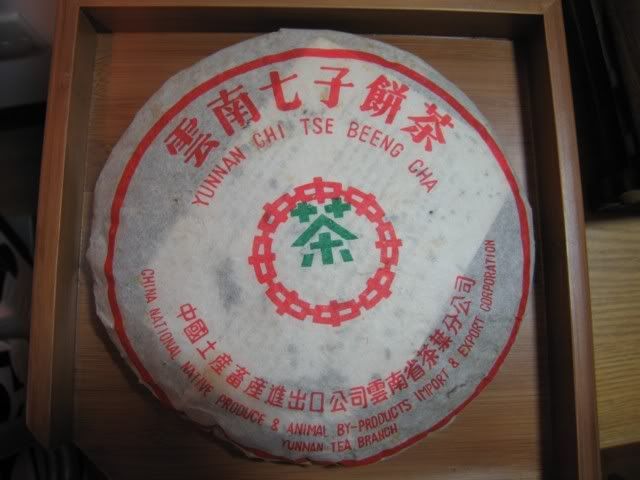
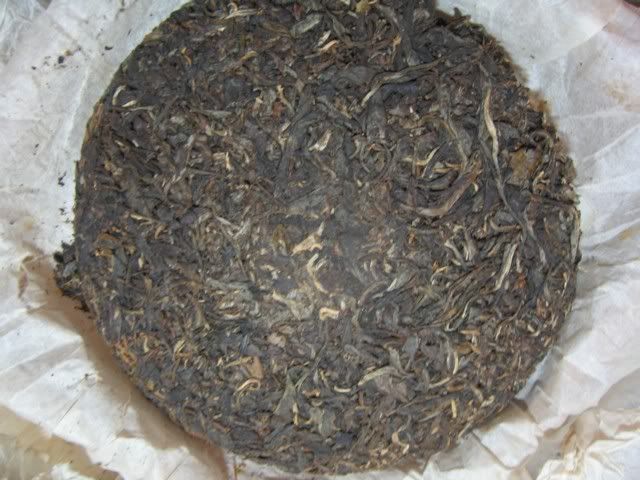
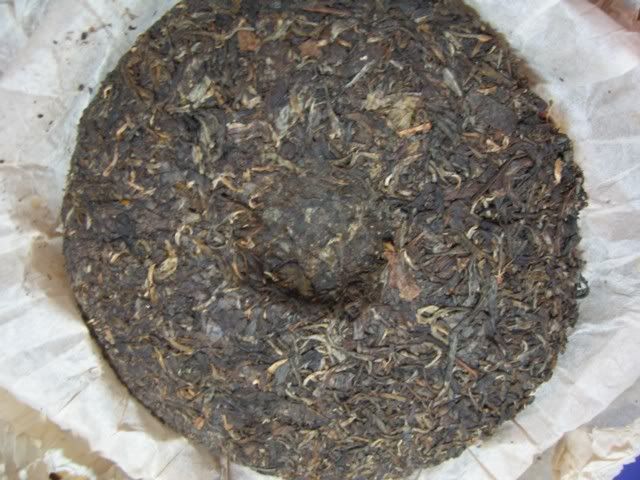
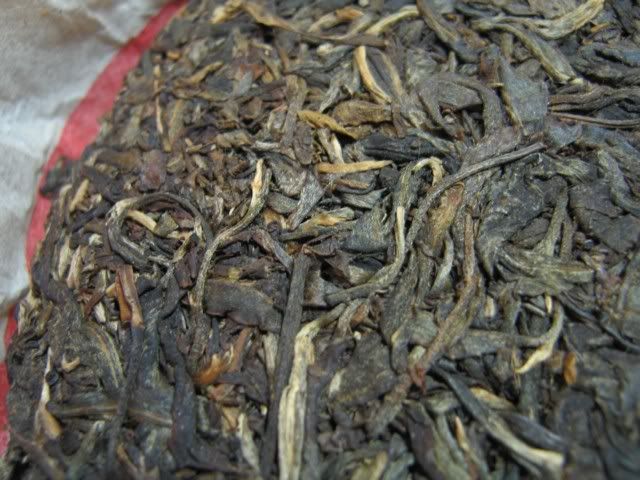
To be honest, I myself don’t really know what it is. I found it in Shanghai. The person who sold it to me claims that it is from 2001/2002. Supposedly made with Yiwu leaves, but freely admitting that they probably weren’t very good Yiwu leaves. When asked about factory, he doesn’t know, and neither do I. Since it’s in a CNNP wrapper, it really could be anything.
As you can see from the picture, one corner of the cake was a bit banged up. There are lots of shavings/fannings in the wrapper, so I decided to use mostly those, plus a little piece I pried off the cake, for my tasting today:
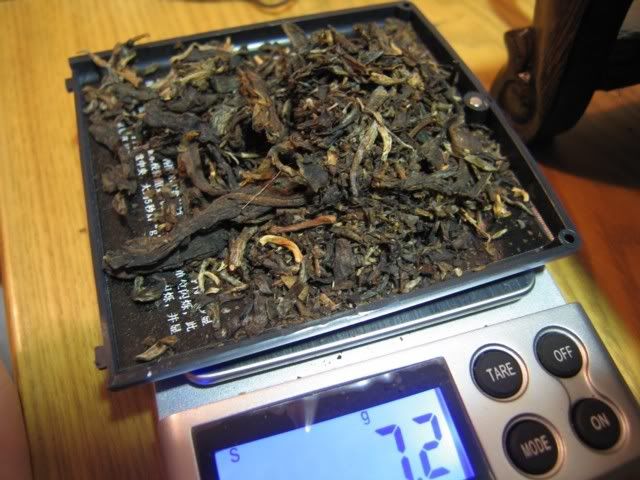
7.2g of tea in a ~75ml gaiwan. There will be some wastage for the tea, because lots of fannings/broken bits will get washed out in the first infusion or two. So maybe it was really more like 7 or 6.8g of leaves.
The times for the infusions was something like 5, 5, 5, 5, 10, 15, 20, 40, 120, 300, 300s. I don’t take exact times, but these are more or less right. Since so many of you took careful notes, it’s only my duty to do so….
Infusion 1 — slightly cloudy, probably due to the tea being mostly fannings. In the mouth — a bit tangy, with what I think some others have described as citrus like. Cools the back of the mouth a bit, and the back of the tongue as well. Some qi, as I drank the cup and start to sweat a little, but nothing major. Ah… I see what some people have said is smokey. There’s an underlying layer of smoke in this tea beneath the tang… just a bit though, and I have a feeling this is a residual of smoke that was a lot more prominent earlier but have dissipated over time.
Infusion 2 — darker in colour, a slightly heavier body, with a stronger taste of that tangy character, slightly puckery on the sides, but tolerable and not unpleasant. Interesting perfumy notes as I swallow. The tea is a little drying on the mouth.
Infusion 3 — The tangy character receding. The tea is turning a little spicy on me, in an odd way, though not entirely unpleasant. Still drying.
Infusion 4 — There’s a slight watery-ness to the tea. Perhaps I ought to lengthen the infusion time. Still a bit thin. Throat feels a little sweet.
Infusion 5 — There’s something odd about the taste of this tea right now. It’s not unlike some slightly aged puerh I’ve had, none of them too promising for the future. There’s something a little bland about the tea as well.
Infusion 6 — More of the same, except this time I took longer before brewing the next infusion and could still feel the slightly sweet and plumy and maybe talcum aftertaste, which is what I think is probably the best attribute of this tea. On the other hand, I also can’t shake the drying feeling of the tea — the throat feels slightly dry, and it’s still thin.
Infusion 7 — I think the tea is turning sweeter, losing that puckery edge and taking on a more talcum like aroma. Still thin.
Infusion 8 — Definitely getting more watery. Need to lengthen infusion time again and see what happens.
Infusion 9 — Steeped for… two minutes? Still a little bland, but it’s gotten a little more of the aftertaste than before.
Infusion 10 — Another long infusion — still got something, more like the talcum. Notice the lack of the word “bitter” in the whole review? There’s still a lingering aftertaste that’s more or less the same as before.
Infusion 11 — Rather weak now, and bland. I might infuse one more, but this is about it. The aftertaste of the tea is starting to die. This is in sharp contrast to, say, the 2002 Mengku I had a few days ago, when the tea left a mark in my mouth for hours. I know that given another…half an hour? I won’t be able to feel much in my mouth that might remind me of having drunk this thing.
The following pictures are infusions 1, 3, 5, 7, in that order

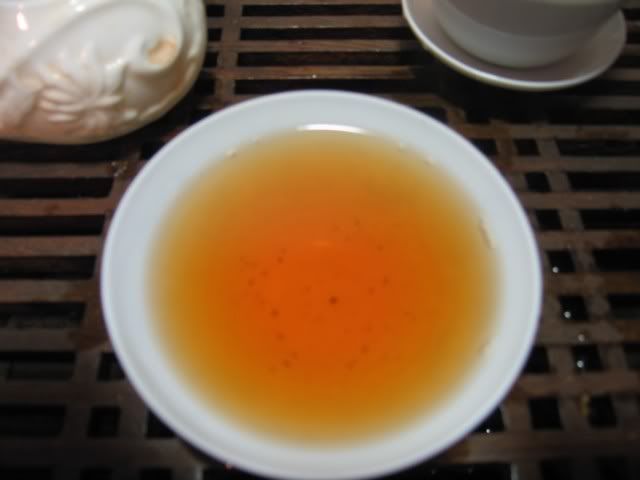
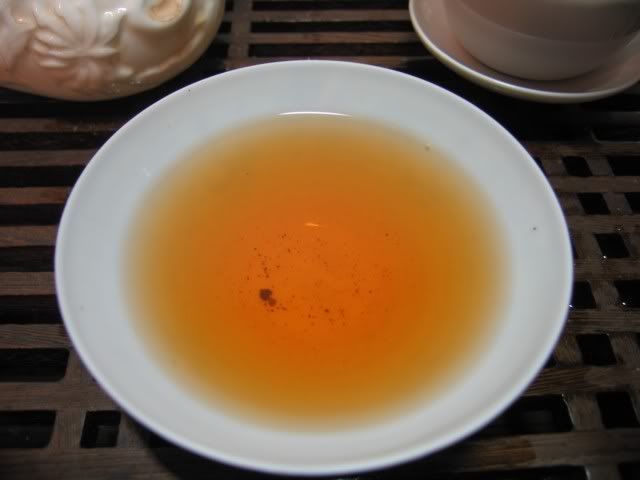
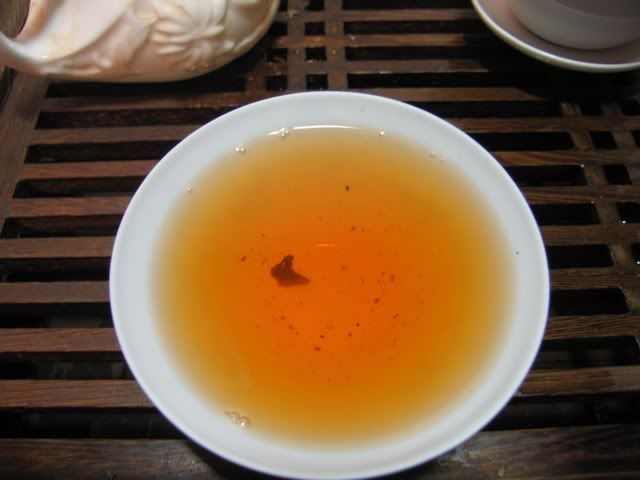
I’ve noticed that when I make tea…. the colour of the tea tends to be fairly consistent throughout the infusions until it really starts dying. I don’t know if that’s a good or bad thing.
This is actually only the second time I am drinking this tea properly, the first being at the teashop when I bought two cakes, one for distribution and one for keeping. I remember thinking to myself that it would provide a nice contrast to sample 1, and that this will be a much more pleasant “drink it now” kind of tea, whereas sample 1 is probably the exact opposite of this. I also thought that this tea, despite its relative drinkability, has problems. The tea’s a little thin, the complete lack of bitterness at this stage of the tea is slightly worrisome, and the slight sourness is not necessarily a good thing. I also thought that, at least for the first two or three infusions, it is quite attractive.
Some have commented on it being possibly pre-feremented. While I can’t say for sure, I must say I can’t rule out this possiblity because of the problems this tea seems to have. Given that I used a fairly generous amount of leaves for a relatively small gaiwan, the fact that it only really made it to infusion 12 is in and of itself a warning sign — especially since the tea started limping along earlier. A good, young puerh worthy of aging should easily brew 15 infusions given my parameters, and it shouldn’t start feeling watery until at least the 10th infusion. Here, the watery feeling starts much earlier. It makes me think this could be summer tea.
Phyll made a comment that it might be a mixed raw/cooked cake. In his sample, he found some pretty dark leaves. I must say I didn’t see any in mine:
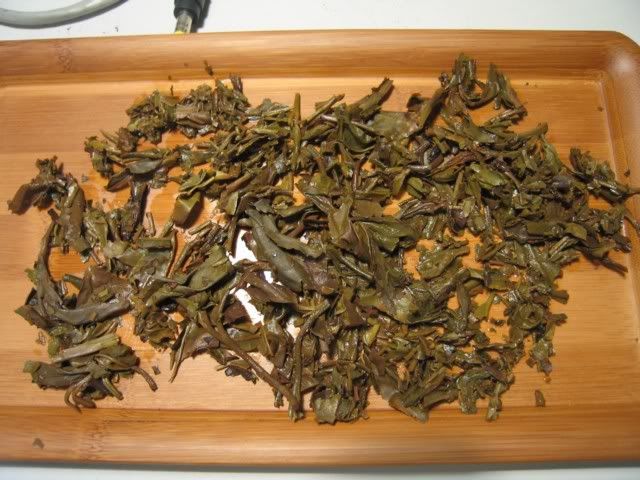
There were leaves with different colours, but that’s common in a sample of a few years old.
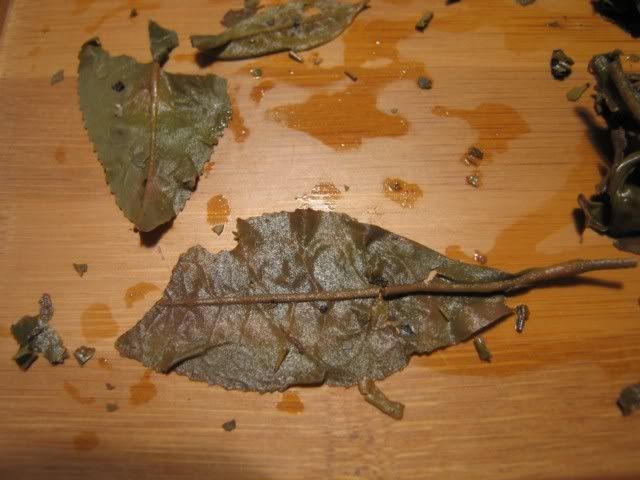

And I sifted through the leaves pretty thoroughly. I also think that given its relatively lightness and airy nature, that a mixture of cooked leaves is pretty unlikely. If cooked tea were mixed in, I’d expect a darker brew and a heavier mouthfeel, neither of which were really present. Instead, as vl pointed out, Phyll’s dark leaves could be more like burnt leaves.
Somebody asked if this tea was wetstored. Once again, I don’t think so, at least not very noticeably. It could’ve been stored in a relatively humid climate (as Shanghai is). Because of the problems or concerns that I have about the cake, I’m not sure if this will really age so well, and I’m not even sure if we could really look at it from the point of view of a normal raw puerh.
What it is is a tea that is pretty easygoing, if a little boring. As long as one doesn’t mistake it for a good aged puerh…
it’s fine, but I can definitely see how somebody can sell this tea for 5x the price it sold for and get away with it.
It has really been interesting to see the range of responses to the tea, and has me puzzling over some issues. It is less apparent with sample A and much more so with sample 1, so I’ll leave that discussion till tomorrow when I give that tea a try again.
I think it will definitely be interesting to see what happens to the sample A cake in the next few years. I hope I’m wrong and it ages wonderfully, although I really have my doubts.


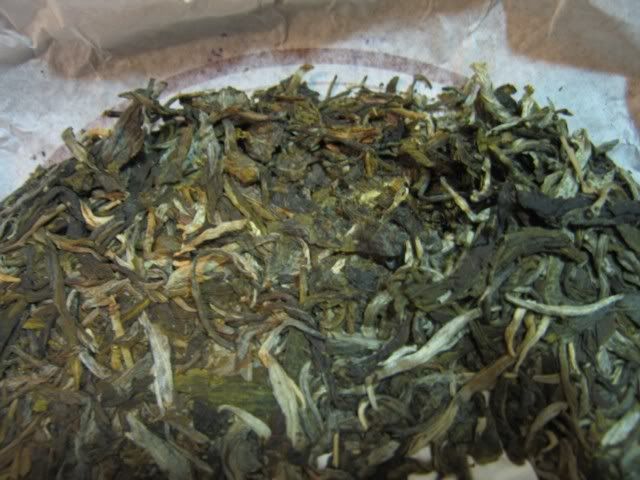
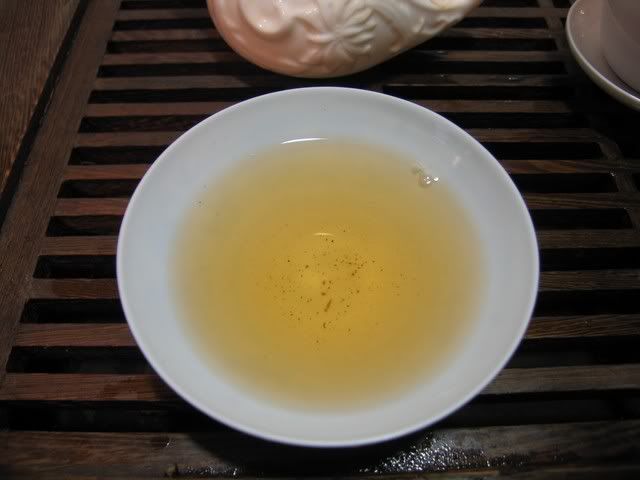
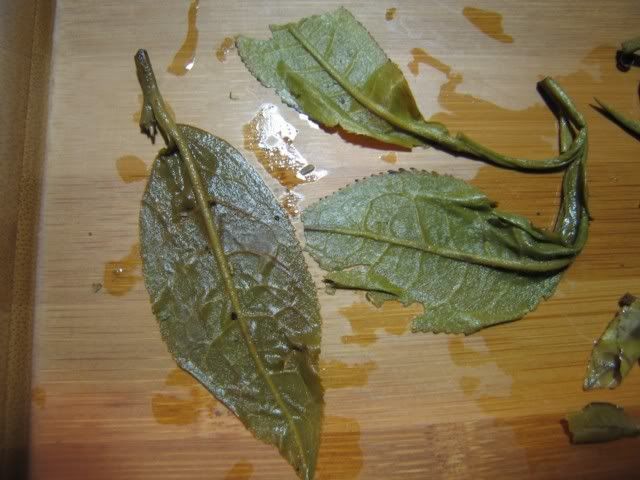
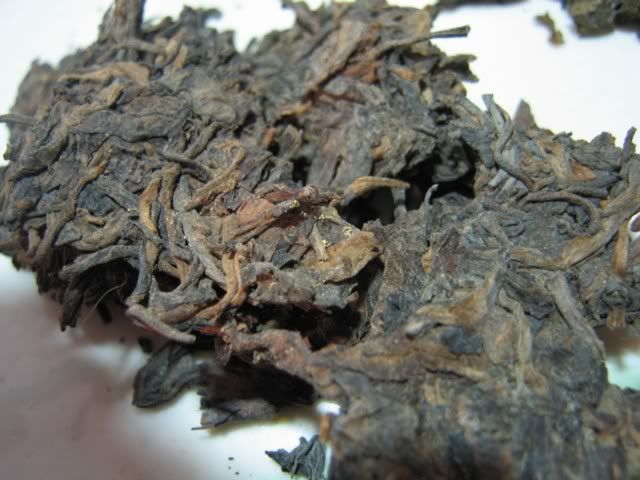
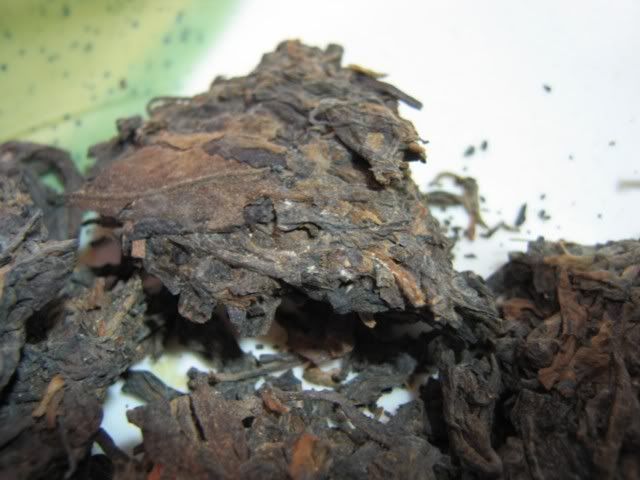
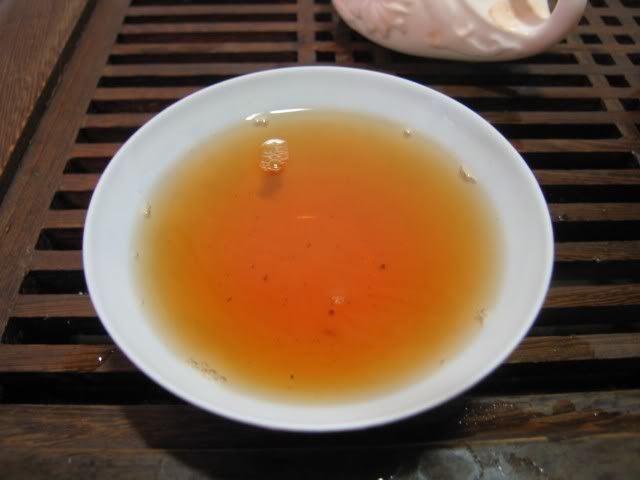
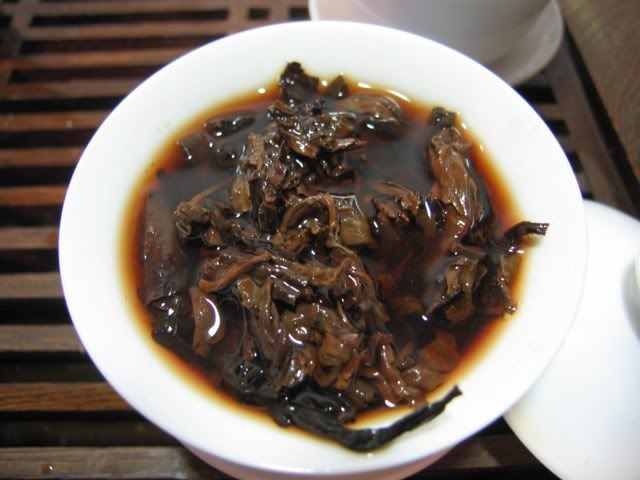
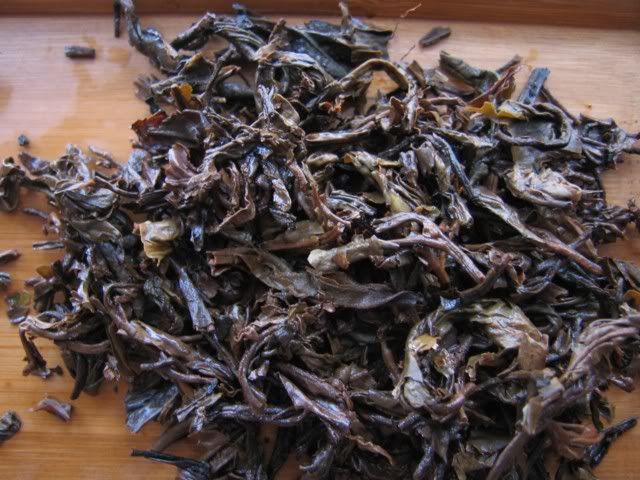


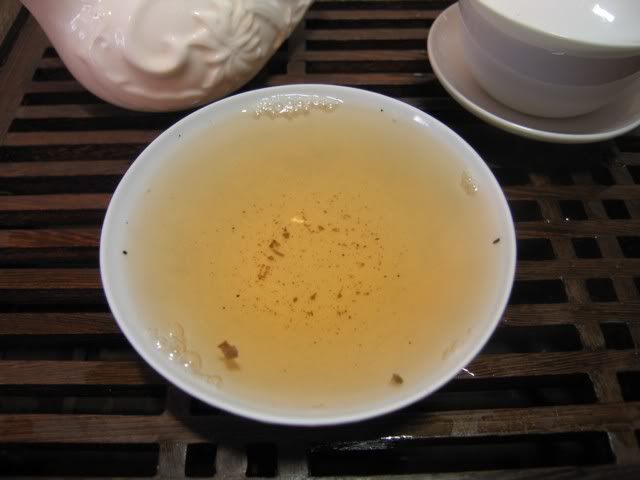
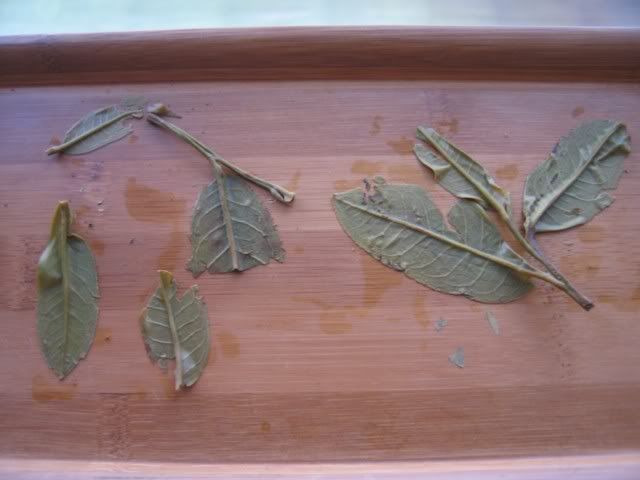

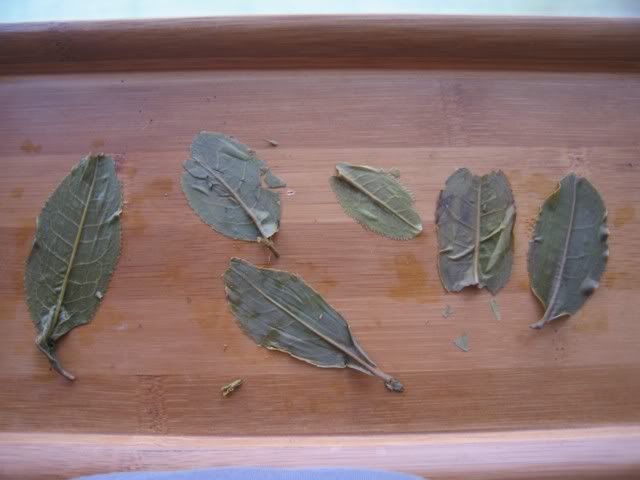
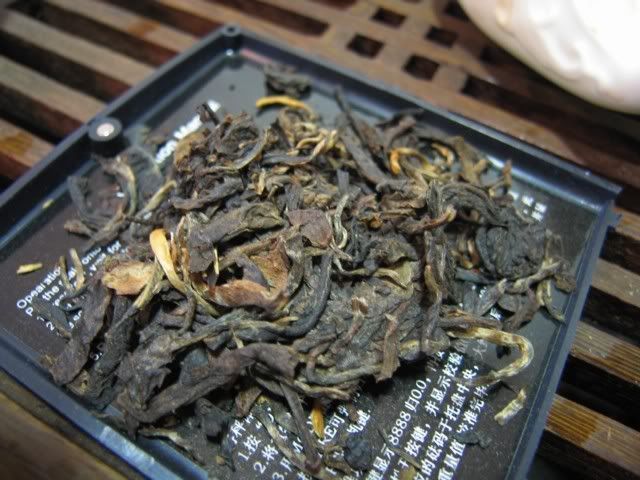
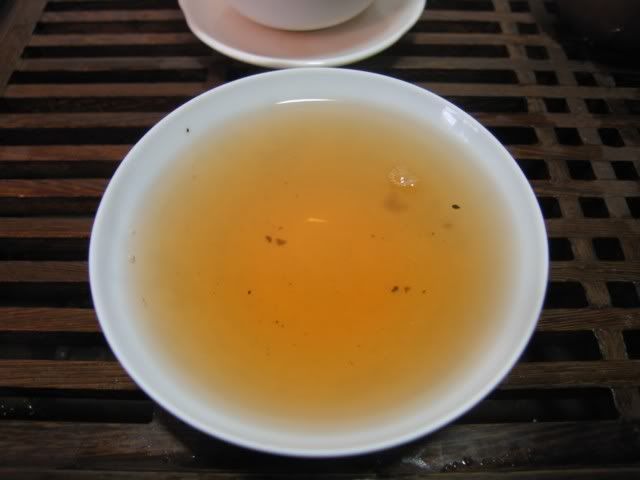

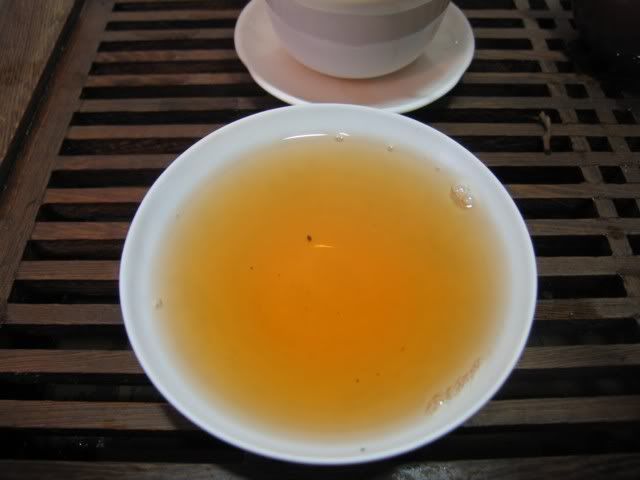
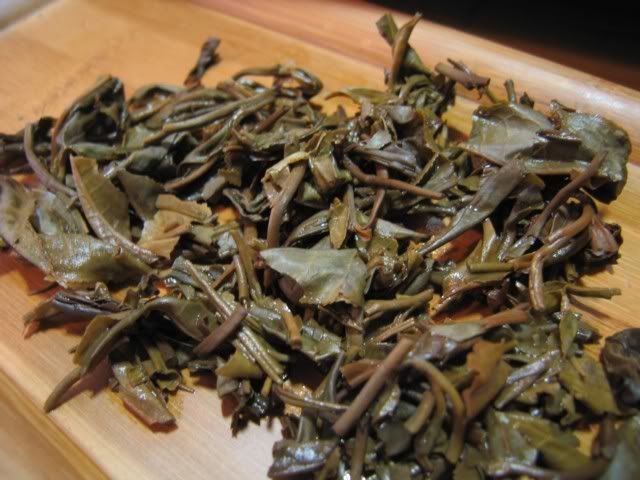

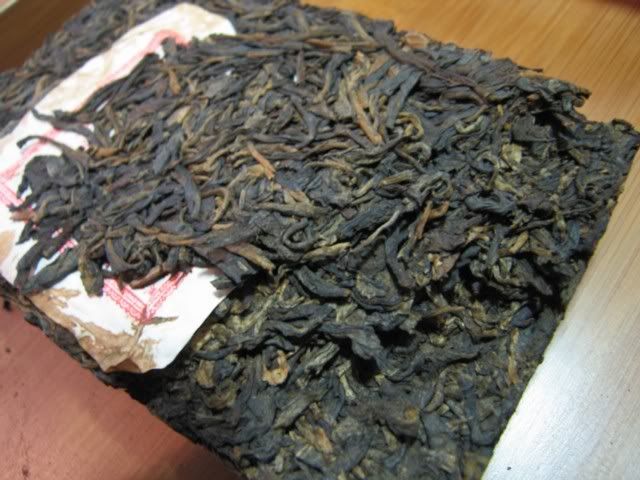
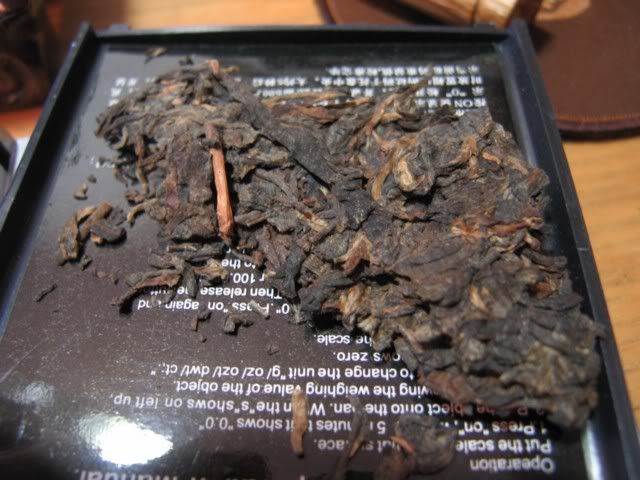



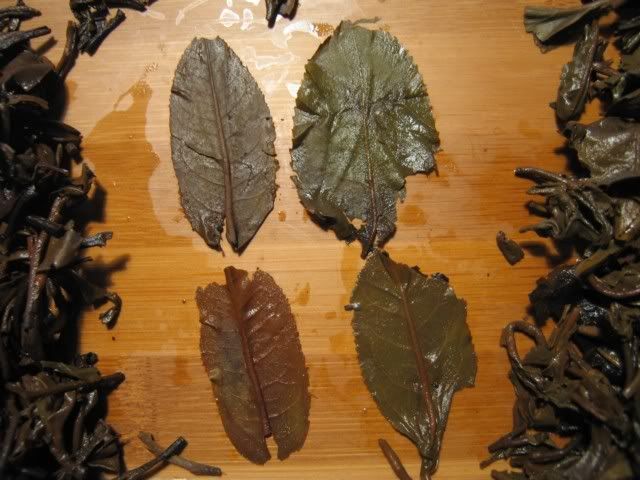
 RSS - Posts
RSS - Posts
I took you at your suggestion and have been reading some of your old post-Covid posts. I haven’t been to…